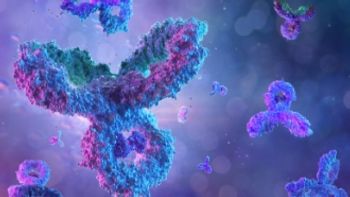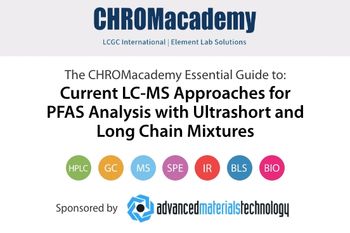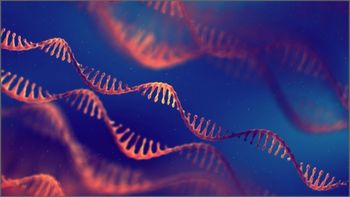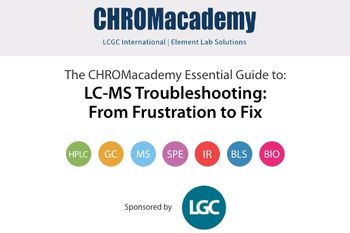
- LCGC North America-05-01-2006
- Volume 24
- Issue 5
Ion Suppression: A Major Concern in Mass Spectrometry
In this tutorial, the mechanism and origin of ion suppression will be investigated, as well as ways to validate the presence, and circumvent or compensate for, the effects in LC-MS.
Ion suppression is one form of matrix effect that liquid chromatography–mass spectrometry (LC–MS) techniques suffer from, regardless of the sensitivity or selectivity of the mass analyzer used. Ion suppression negatively affects several analytical figures of merit, such as detection capability, precision, and accuracy. The limited knowledge of the origin and mechanism of ion suppression makes this problem difficult to solve in many cases. Over the past decade and a half since the response-reducing phenomenon was exposed, however, protocols have been developed not only to test for its presence but also to account for its effects and eliminate the risk of ion suppression altogether. Because there is no universal solution for the matrix effect, some of the viable options are discussed briefly in this tutorial, which alone or in combination can help regain the quality of LC–MS analysis for the particular matrix–analyte combination. Two commonly used techniques to detect the presence of the matrix effect are illustrated. Modifying instrumental components and parameters, chromatographic separation, and sample preparation are all considered as means of reducing or possibly eliminating ion suppression. A variety of calibration techniques for compensating the effects of the phenomenon also are discussed.
Liquid chromatography–mass spectrometry (LC–MS) and tandem mass spectrometry (LC–MS-MS) have been established as the most sensitive and selective analytical techniques for biological samples. Starting in the early 1990s, however, many studies also have reported difficulties with reproducibility and accuracy when analyzing small quantities of analytes in complex samples such as biological fluids (1–3). Kebarle and Tang (2) originally described the matrix effect phenomenon as the result of coeluted matrix components, affecting the detection capability, precision, or accuracy for the analytes of interest. Ion suppression appears as one particular manifestation of matrix effects, which is associated with influencing the extent of analyte ionization (Figure 1). This change often is observed as a loss in response, thus, the term ionization suppression. However, depending upon the type of sample, it also can be observed as an increase in the response of the desired analyte (4). In this tutorial, the mechanism and origin of ion suppression will be investigated, as well as ways to validate the presence and circumvent or compensate for the effects in LC–MS.
Figure 1: Multiple reaction monitoring chromatograms for a constant postcolumn infusion of analyte (phenacetin). For the lower trace, protein precipitation blank plasma was injected, while the upper trace exhibits the chromatogram for an injection of pure mobile phase. The difference between the two traces directly shows the effect of endogenous plasma components on the analyteôs response. (Chromatographic traces reproduced from reference 25 by courtesy of John Wiley and Sons.)
Mechanism of Ion Suppression
The term ion suppression was introduced originally by Buhrman and coworkers (3). The authors described it quantitatively as (100 - B)/(A × 100), where A and B are the unsuppressed and suppressed signals, respectively. Ion suppression occurs in the early stages of the ionization process in the LC–MS interface, when a component eluted from the high performance liquid chromatography (HPLC) column influences the ionization of a coeluted analyte. It is important to realize that MS–MS methods are, therefore, just as susceptible to ion suppression effects as single LC–MS techniques because the advantages of MS–MS begin only after the ion formation (5). For example, it was found for the analysis of herbicides in surface waters that ion suppression occurred for practically all analytes and in all matrices investigated (6). Furthermore, even if interfering compounds are not recorded, their presence still affects the response of the analyte of interest. In fact, the use of LC–MS-MS has made ionization suppression problems much more evident (4). Because of the specificity of the method, analysis times in LC–MS-MS assays often are reduced significantly by researchers, due to the misconception that chromatographic separation and sample preparation can be minimized or even eliminated. However, simply using LC–MS-MS does not guarantee selectivity. Disregarding sample cleanup, especially when complex matrices are involved, will lead to poor performance. Thus, careful consideration must be given to evaluating and eliminating matrix effects when developing any assay.
The origin and mechanism of matrix effects are not understood fully. There are many possible sources for ion suppression, including endogenous compounds from the sample matrices as well as exogenous substances, molecules not present in the original sample but from contamination during sample preparation, such as polymers extracted from different brands of plastic tubes (7). Some factors make a compound a prime candidate for inducing ion suppression, for example, high concentration, mass, and basicity, and elution in the same retention window as the analyte of interest (8).
Many different mechanisms of ion suppression have been proposed, most of which are specific to the ionization technique used (4). The two most popular atmospheric-pressure ionization (API) techniques for LC–MS are electrospray ionization (ESI) and atmospheric-pressure chemical ionization (APCI).
Electrospray is usually a sensitive detection method for polar molecules; however, at high concentrations (>10–5 M), the approximate linearity of the ESI response often is lost (Figure 2). This might be due to a limited amount of excess charge available on ESI droplets or to saturation of the ESI droplets with analyte at their surfaces at high analyte concentrations, thus, inhibiting ejection of ions trapped inside the droplets. Regardless of the mechanism for saturation, in multicomponent samples of high concentrations, competition for either space or charge most likely is occurring and, in turn, suppression of signal is observed. Both the characteristics and concentration of an analyte determine the efficiency of its ionization. The characteristics that decide whether a compound will out-compete others for the limited charge or space on the surface of the droplet include its surface activity and its basicity. Because biological matrices contain large amounts of endogenous compounds with potentially very high basicities and surface activities, the limit concentration of 10–5 M of ions is reached quickly, and ion suppression occurs with such samples (10).
Figure 2: Plot (log-log) of total ion current versus sodium chloride concentration showing the loss of linearity (dashed line gives slope equal to unity) occurring above a concentration of 10â5 M of ESI due to ion suppression. (Reprinted with permission from reference 1; copyright 1990 American Chemical Society.)
Another theory for signal suppression in ESI considers the effects of an increase of viscosity and surface tension of the droplets from the high concentrations of interfering compounds, thus, reducing solvent evaporation and the ability of the analyte to reach the gas phase (11,12). Finally, the presence of nonvolatile material also has been evaluated as the cause for ion suppression. Nonvolatile materials can decrease the efficiency of droplet formation through coprecipitation of analyte or preventing droplets from reaching their critical radius required for gas phase ions to be emitted (8). In addition to the described condensed-phase processes, analyte ions also can be neutralized in the gas phase via deprotonation reactions with high gas-phase basicity substances, thus, leading to suppression of their response signal, similar to the reactions seen in APCI (12).
APCI frequently gives rise to less ion suppression than ESI (Figure 3), which is related to the different mechanisms of ionization (9,10). As a result, ion suppression in the presence of coeluted compounds often is different for ESI and APCI. Unlike ESI, there is no competition between analytes to enter the gas phase, because neutral analytes are transferred into the gas phase by vaporizing the liquid in a heated gas stream. Also, ion suppression is not related directly to charge saturation, because the maximum number of ions formed by gas-phase ionization is much higher, as reagent ions are redundantly formed (10). Nonetheless, APCI does experience ion suppression, which has been explained by considering the effect of sample composition on the efficiency of charge transfer from the corona discharge needle (13). In addition, because there is very little chance for analytes to pass through the vaporization region and remain in solution, another mechanism of ion suppression in APCI is solid formation, either as pure analyte or as a solid coprecipitate with other nonvolatile sample components (14).
Figure 3: Comparing ion suppression experienced using APCI (top) and ESI (bottom). The chromatograms show the effect of sample components after protein precipitation, eluted from the analytical column on the signal intensity of a postcolumn infusion of 10 μM urapidil (compare the experimental setup in Figure 1). (Reproduced from reference 14 by courtesy of Elsevier Science.)
Although the actual mechanisms of ion suppression in the different API interfaces are still under investigation, the consequences must be considered carefully. Ion suppression usually results in reduced detection capability, possibly even to the extent of a false negative for an existing analyte. The other extreme, a false positive, also can occur for applications where maximum residue limits are monitored, if the internal standard experiences ion suppression. Due to the natural variation of endogenous compounds in biological samples, varying levels of ion suppression often result as well. This variation in turn can lead to both systematic and random errors in the signal response, effecting ion intensity ratios and linearities.
Detecting Ion Suppression
Due to the detrimental effects of ion suppression, it is intuitive that it should be an important consideration during method validation. In fact, the recently issued U.S. Food and Drug Administration's (FDA) Guidance for Industry on Bioanalytical Method Validation (15) clearly indicates the need for such consideration to ensure that the quality of analysis is not compromised.
There are several experimental protocols for evaluating the presence of ion suppression. First, a comparison of the multiple reaction monitoring (MRM) response (peak areas or peak heights) of an analyte in the blank sample spiked postextraction to that of the analyte injected directly into the neat mobile phase can be conducted (16). If the analyte signal in the matrix is low compared to the signal in pure solvent or even undetectable, this indicates that the presence of interfering agents are causing the ion suppression. While this experiment is useful in indicating the presence of the interference and the extent of ion suppression, it provides no information as to the chromatographic profile or location of the interference.
A protocol that does locate the region in the chromatogram influenced by matrix effects on the analyte (and internal standard) is the infusion experiment (11). The infusion experiment involves the continuous introduction of a standard solution containing the analyte of interest and its internal standard by means of a syringe pump connected to the column effluent. After injecting a blank sample extract into the LC system, a drop in the constant baseline indicates suppression in ionization of the analyte due to the presence of interfering material (Figure 1). Both approaches are useful, and the analytical chemist must decide which one to use based upon whether it is the extent of ion suppression or a chromatographic profile that is of interest.
Strategies for Reducing Ion Suppression
When the validation of the bioanalytical method gives evidence of ion suppression, various strategies are available to help eliminate the matrix interferences. Without changing the sample preparation or chromatography method, one can try to change the ionization mode first. For example, switching to negative ionization can reduce the extent of ion suppression. Because fewer compounds give a response in negative mode, the detectable compounds often are subjected to ion suppression less. Furthermore, as APCI is less prone to ion suppression in many cases, using this ionization technique also can reduce the interference effect (17). Source geometries also can have an influence on the amount of ion suppression experienced. In a recent study, the extent of ion suppression effects was found to follow the general rule: Z-spray < orthogonal spray < linear spray geometries (18). As was stated previously, ion suppression occurs in the early stages of the ionization process, so the choice of mass analyzer should have little or no influence on the phenomenon.
Next, another approach to reduce ion suppression is to dilute the sample or reduce the volume of sample injected, thereby reducing the amount of interfering compounds. It also has been shown that reducing the ESI flow rate to the nanoliter-per-minute range leads to reduced signal suppression due to generating smaller, more highly charged droplets that are more tolerant of nonvolatile salts (19). These approaches, however, might not be appropriate for trace analysis (12).
In general, improving the sample preparation and chromatographic selectivity are the two most effective ways of circumventing ion suppression. Often, it is easiest to adjust the chromatographic conditions so that the analyte peaks are not eluting in regions of suppression (5). This protocol requires a chromatographic profile to determine where the interferences are eluted and then a method to effectively resolve the analyte from those interferences. The two areas of the chromatographic elution that are most affected by interferences are the solvent front, where unretained compounds are eluted, and the end of the elution gradient, where the strongly retained compounds are eluted. So it is recommended to adjust the capacity factors of the analytes to elute them between these two regions and from other areas that can be affected by ion suppression.
An easy and effective way to change chromatographic selectivity is by modifying mobile phase strength or gradient conditions. A change in the mobile phase's organic solvent can provide dramatic selectivity changes in HPLC. As well, related to mobile phase chemistry, is the use of additives and buffers to aid in separation and improve the chromatographic performance. However, such species can cause the suppression of electrospray signal themselves or contamination of the mass spectrometer (20). Therefore, it is important to consider what is required to achieve the best possible chromatographic performance while maintaining ESI or APCI efficiency. Trifluoroacetic acid, although having excellent ion pairing and solvating characteristics and being highly volatile often results in spray instability and analyte signal reduction. In a recent study, it was found that trifluoroacetic acid was the worst additive under investigation in ESI, where formic acid was found to be the overall best (20). Independent of the type, however, analyte response has been shown to decrease with increasing concentration of additive, so it is important to use them in as low a concentration as possible. Although comparably less effective in adjusting selectivity, a change of the stationary phase also can be used.
Sample Preparation Techniques
It is not always possible to separate analyte from interferences in the chromatogram in order to avoid ion suppression. For example, hydrophobic components with retention times that overlap the analyte are the most difficult to separate. In such cases, an alternative means to overcome matrix effects is sample preparation (Figure 4). There are a variety of techniques available; however, they differ in their ability to remove interferences and in their ease of use. The traditional sample pretreatment methods for HPLC separations involve either partitioning between immiscible solvents, as in liquid–liquid extraction (LLE), or trapping onto a solid-phase support, as in solid-phase extraction (SPE). These sample preparation techniques will be looked at in this tutorial, as well as protein precipitation, which is a sample preparation protocol frequently used when analyzing blood samples. There are many other sample preparation approaches that, however, will not be described here including Soxhlet extraction, filtration, homogenization, dialysis, microwave digestion, supercritical fluid extraction, etc.
Figure 4: Chromatograms obtained using sample preparation via molecular-imprinted polymer extraction (lower trace) and no sample preparation (upper trace). (Reproduced from reference 26 by courtesy of Elsevier Science.)
LLE generally provides cleaner extracts than SPE, thus, leading to less ion suppression (21). However, highly polar and ionic compounds can be difficult to extract by LLE. Furthermore, even an appropriate solvent rarely extracts the analyte quantitatively; that is, multiple extraction steps commonly are needed.
There is a wide variety of stationary phases available for selective removal of desired analytes using SPE, including polar, hydrophobic, and ionic interactions. SPE has the advantage that much more specific protocols can be generated to selectively clean samples of interferences. The challenge, however, is to choose the washing and elution solvents along with the solid phase to match the properties of the analyte of interest. Also, in some cases, interfering components might not be selectively separated from the analyte.
Due to its simplicity, protein precipitation remains a popular sample preparation technique in pharmaceutical analysis. It has been used successfully to eliminate as much as 98% of all proteins contained in blood samples (that is, serum, plasma), which can cause deterioration of separation and ionization efficiency (22). However, protein precipitation procedures are known to suffer from incomplete precipitation, loss of analyte by entrapment or adsorption to the precipitate, and lower sensitivity resulting from dilution, contributing to an analyte recovery that is often less than 60% (22). The main type of interferences that protein precipitation remove are proteins, thus, other components of the plasma can remain and still cause ion suppression. Matrix ion suppression is therefore more often a problem with protein precipitation methods as compared with LLE or SPE (9).
Finally, Figure 5 summarizes the described sample preparation techniques and their effect on ion suppression of a drug molecule. In this application, the smallest initial loss in ESI response was seen for the LLE plasma extracts. The various SPE techniques resulted in plasma samples that caused a slightly greater loss of response, while the protein precipitation samples produced the greatest amount of ion suppression. In addition, there were also significant differences of the length of time required for the ESI response to return to its presample injection intensities. For the LLE samples, response returned to presample injection intensities within a short time, while SPE and protein precipitation samples took much longer to recover (Figure 5).
Figure 5: The effect of different sample preparation techniques on the amount of remaining endogenous plasma components and the extent of ion suppression, respectively, for phenacetin. Shown are MRM chromatograms of a postcolumn infusion of phenacetin, after injecting 10 μL of a blank plasma sample on-column, prepared by each of the following sample preparation methods: (a) protein precipitation blank, (b) Oasis SPE (Waters Corp., Milford, Massachusetts), (c) methyl-tert-butyl ether LLE, (d) Empore C2 disk SPE (3M, St. Paul, Minnesota), (e) Empore C8 disk SPE, and (f) Plasma Empore C18 disk SPE. (Reproduced from reference 25 by courtesy of John Wiley and Sons.)
Calibration
When matrix suppression phenomena cannot be eliminated, different calibration techniques have been developed to compensate for matrix effects. External calibration involves several samples being prepared at different analyte concentrations and linear calibrations calculated for each analyte. It is important that the calibration samples have the same composition as the test samples under investigation (matrix-matched). However, blank matrix solutions free of residues of the target analyte might not always be available. It is also important that there is little variance in test sample composition. The reason for this is that for the calibration technique to compensate fully for the effect of the matrix phenomenon, both the calibration and test samples must be affected equally by ion suppression. However, this method unfortunately is time consuming.
The standard addition method is another calibration technique that can be used. It involves the same sample extract to be spiked with the analyte at different concentration levels. This method is very effective, giving good results even with variable sample matrices. However, it is also very time consuming, because spiked samples must be run for each unknown (6).
The most widely used technique involves internal standards. An internal standard allows the response of a given analyte to be normalized, thus, compensating for possible variations during sample preparation, injection, chromatography, matrix effects, and so forth. To compensate for matrix effects, the internal standard must have ionization properties very similar to those of the analyte. The internal standard and analyte also must have identical or very close retention times to ensure that they are exposed to the same coeluted compounds. By modifying the LC conditions, the internal standard and analyte often can be eluted at the same time. If a stable isotope-labeled analog is used as the internal standard, which has identical chemical and structural properties to those of the analyte, the analyte and internal standard will behave identically not only during chromatography but also during sample preparation. Isotopic analogs are therefore the best choice of internal standard to reduce signal variability and improve precision. In fact, Freitas and coworkers (6) have illustrated nicely that the use of isotopic internal standard is a "prerequisite for achieving reliable quantification and high precision." However, ion suppression also has been found to occur between analyte and their isotope-labeled internal standard (23). To avoid this, the internal standard concentration should not be too high. Although an appropriate internal standard concentration for the particular investigated analytes and experimental parameters can be determined by experiment, isotope-labeled internal standards are not always available and often very expensive, especially in a multicomponent analysis, in which a separate internal standard for each analyte is required.
Figure 6: A typical ESI chromatogram resulting from the echo peak technique. The first peak is for the echo injection, which consisted of standard (propoxur, a carbamate pesticide) in solvent containing the analytes at 0.1 g/mL (black peak). The second peak is the sample injection, which consisted of a spiked lemon extract (transparent peak). (Reproduced from reference 27 by courtesy of Elsevier Science.)
A new and interesting alternative to the internal standard concept is the echo peak technique. The technique simulates the use of internal standard, without the demand for an isotope-labeled analog of the target analyte. It consists of two injections, the unknown sample, and a standard solution, within a short time period. Thus, an echo peak forms, where the analyte peak is eluted in close proximity to the peak from the sample (Figure 6). Because both peaks are eluted so closely, it is expected that they are affected somewhat equally by coeluted matrix components. Therefore, ion suppression experienced by the analyte will be compensated for.
Summary
Although LC–MS is a highly selective and sensitive technique, it is vulnerable to the response-reducing phenomenon of ion suppression. Avoiding its effects "has become something like an art," as recently stated by Constantopoulos and colleagues (24). There is no universal solution to the problem, but specific protocols are required for each matrix and analyte combination. Different strategies are available to validate the presence and quantitative extent of ion suppression and to determine the chromatographic profile of the interferences. Numerous chromatographic and sample preparation techniques have been developed to circumvent suppression of ionization from occurring, as well as calibration methods to balance the effects or minimize its consequences. Eliminating the risk of ion suppression effects is possible, but it involves careful optimization of sample preparation, chromatography and calibration techniques.
Dr. Dietrich Volmer is a senior research scientist at the Institute for Marine Biosciences and a faculty member in the Department of Chemistry, Dalhousie University, Halifax, Nova Scotia, Canada. Please address correspondence to: Dr. Dietrich A. Volmer at
Lori Lee Jessome is a graduate student in Dr. Volmer's group.
References
(1) M.G. Ikonomou, A.T. Blades, and P. Kebarle, Anal. Chem. 62, 957–967 (1990).
(2) P. Kebarle and L. Tang, Anal. Chem. 65, 972A–986A (1993).
(3) D.L. Buhrman, P.I. Price, and P.J. Rudewicz, J. Amer. Soc. Mass Spectrom. 7, 1099–1105 (1996).
(4) B.K. Matuszewski, M.L. Constanzer, and C.M. Chavez-Eng, Anal. Chem. 75, 3019–3030 (2003).
(5) M.D. Nelson and J.W. Dolan, LCGC Eur. 15, 73–79 (2002).
(6) L.G. Freitas, C.W. Gotz, M. Ruff, H.P. Singer, and S.R. Muller, J. Chromatogr. A 1028, 277–286 (2004).
(7) H. Mei, Y.Hsieh, C. Nardo, X. Xu, and S. Wang, Rapid Commun. Mass Spectrom. 17, 97–103 (2003).
(8) T.M. Annesley, Clin. Chem. 49, 1041–1044 (2003).
(9) B.K. Matuszewski, M.L. Constanzer, and C.M. Chavez-Eng, Anal. Chem. 70, 882–889 (1998).
(10) C.H.P. Bruins, C.M. Jeronimus-Stratingh, K. Ensing, W.D. van Dongen, and G.J.D. Jong, J. Chromatogr., A 863, 115–122 (1999).
(11) C.R. Mallet, Z. Lum, and J.R. Mazzeo, Rapid Commun. Mass Spectrom. 18, 49–58 (2004).
(12) J.-P. Antignac, K.D. Wasch, F. Monteau, H.D. Brabander, F. Andre, and B.L. Bizec, Anal. Chem. Acta 529, 129–136 (2005).
(13) T. Sangster, M. Spence, P. Sinclair, R. Payne, and C. Smith, Rapid Commun. Mass Spectrom. 18, 1361–1364 (2004).
(14) R. King, R. Bonfiglio, C. Fernandez-Metzler, C. Miller-Stein, and T. Olah, J. Amer. Soc. Mass Spectrom. 11, 942–950 (2000).
(15) Food and Drug Administration, Guidance for Industry on Bioanalytical Method Validation. Fed. Regist., 66(100),28526 (Docke No. 98D-1195) (2001).
(16) H. Kim, M.S. Jang, J.-A. Lee, D. Pyo, H.-R. Yoon, H.J. Lee, and K.R. Lee, Chromatographia, 60, 335–339 (2004).
(17) S. Souverain, S. Rudaz, and J.-L. Veuthey, J. Chromatogr., A 1058, 61–66 (2004).
(18) M. Holcapek, K. Volna, P. Jandera, L. Kolarova, K. Lemr, M. Exner, and A. Cirkva, J. Mass Spectrom. 39, 43–50 (2004).
(19) E.T. Gangl, M. Annan, N. Spooner, and P. Vouros, Anal. Chem. 73, 5635–5644 (2001).
(20) D. Temesi and B. Law, LCGC 17(7), 626 (1999).
(21) Q.C. Ji, M.T. Reimer, and T.A. El-Shourbagy, J. Chromatogr., B 805, 67–75 (2004).
(22) S. Souverain, S. Rudaz, and J.-L. Veuthey, J. Pharm. Biomed. Anal. 35, 913–920 (2004).
(23) H.R. Liang, R.L. Foltz, M. Meng, and P. Bennett, Rapid Commun. Mass Spectrom. 17, 2815–2821 (2003).
(24) T.L. Constantopoulos, G.S. Jackson, and C.G. Enke, J. Amer. Soc. Mass Spectrom. 10, 625–634 (1999).
(25) R. Bonfiglio, R.C. King, T.V. Olah, and K. Merkle, Rapid Commun. Mass Spectrom. 13, 1175–1185 (1999).
(26) R.M. Smith, J. Chromatogr., A 1000, 3–27 (2003).
(27) L. Alder, S. Luderitz, K. Lindner, and H.-J. Stan, J. Chromatogr., A 1058, 67–79 (2004).
Articles in this issue
over 19 years ago
New GC Instruments and Accessories at the 57th Pittsburgh Conferenceover 19 years ago
A NanoLC–MS Primer for Expression Proteomics: Part IIover 19 years ago
The Rise and Fall of Expertise in Gas Chromatographyover 19 years ago
Peaks of Interestover 19 years ago
Method Validation and Robustnessover 19 years ago
Dwell Volume RevisitedNewsletter
Join the global community of analytical scientists who trust LCGC for insights on the latest techniques, trends, and expert solutions in chromatography.





